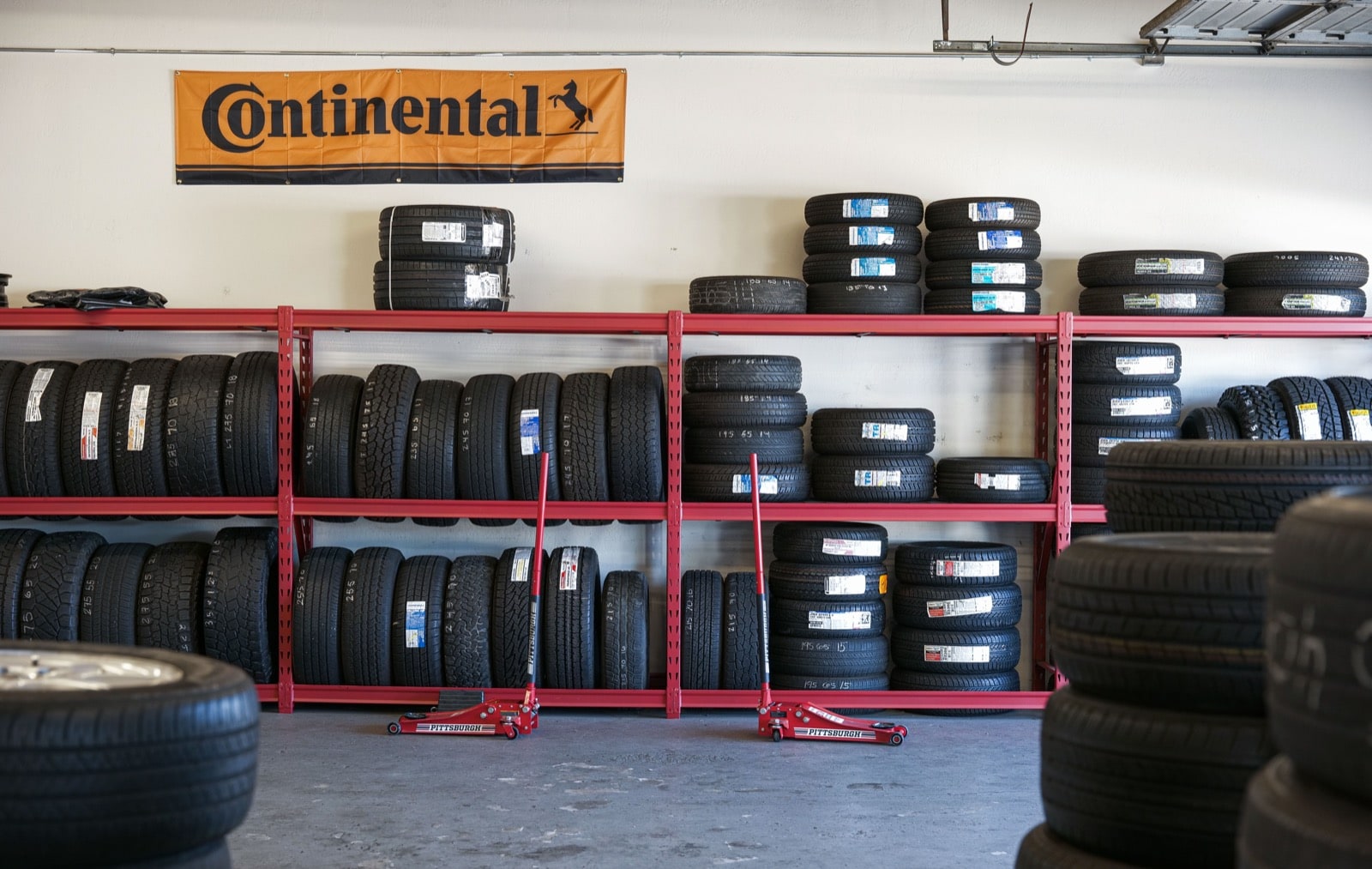The Science Behind Tire Repair and Safety
When it comes to the intricate globe of tire upkeep and safety and security, there exists a realm of scientific research that often continues to be undetected by the typical chauffeur - discount tires morris il. The products that make up a tire, the effect of tire stress on total safety and security, the ramifications of tread wear, the intricate characteristics of tire grip, and the often-overlooked importance of proper wheel positioning all play vital duties in making sure a car operates securely and effectively. As we navigate with the complexities of tire fixing and safety, it becomes noticeable that a much deeper understanding of these clinical principles is not just helpful but crucial for every single driver on the roadway
Tire Structure and Functionality
What products compose the make-up of tires, and how do these parts contribute to their performance on the roadway? Tires are complicated items, usually made from a combination of rubber substances, material, steel cables, and various other chemical additives. The most typical kind of rubber used in tires is artificial rubber, which uses sturdiness and resistance to damage. The fabric layers, usually made from polyester, nylon, or rayon, give stamina and security to the tire framework. Steel cables are included to enhance the tire's stamina and assist it preserve its form under various road conditions.
The make-up of tires plays an important function in their performance on the road - morris tire service. The rubber compounds use hold and grip, permitting the tire to follow the road surface and give stability during velocity, stopping, and cornering. The material and steel layers add to the tire's capacity to hold up against stress, preserve its shape, and support the car's weight. Overall, the careful option and combination of these materials make sure that tires can carry out effectively and securely on numerous roadway surface areas and conditions.
Influence of Tire Stress on Safety
On the other hand, overinflated tires have less call with the road surface, decreasing traction and causing uneven wear on the tire footsteps. Appropriately inflated tires likewise play an essential role in fuel performance, as underinflated tires can boost moving resistance, leading to lowered gas mileage. Consistently examining and keeping the appropriate tire pressure not just makes sure security but additionally expands the life expectancy of the tires, saving on replacement expenses in the lengthy run.
Tread Use and Its Implications
Proper surveillance of tire tread wear is essential for making certain ideal performance and security on the roadway. As tires put on down, the deepness of the step reduces, lowering the tire's capacity to keep traction, especially in damp or slippery conditions. The step pattern and deepness play a crucial function in funneling water far from the tire to avoid hydroplaning and preserving grasp on the roadway surface.
Indications of too much walk wear consist of bald spots, unequal wear, and the look of wear signs. Hairless areas suggest local wear, which can bring about instability and increased danger of blowouts. Uneven wear might suggest concerns with tire positioning, suspension, or rising cost of living elements. Put on indicators are constructed into the tire step and come to be noticeable when the tread deepness gets to a certain nadir, suggesting the demand for immediate replacement.

Understanding Tire Traction Characteristics
Checking tire step wear not only makes certain optimum efficiency and safety but additionally directly affects the traction dynamics of the tires on various road surfaces. Tire grip is an important facet of vehicle handling and safety and security, as it figures out the hold between the tires and the roadway. Traction dynamics vary relying on roadway problems such as dry sidewalk, wet roadways, snow, or ice.

Understanding tire grip characteristics is essential for chauffeurs to adjust their driving habits according to the roadway problems. tire shop near me. Regularly checking tire tread deepness and problem can significantly boost traction performance, ensuring much safer driving experiences across different surface areas
Significance of Appropriate Wheel Positioning
Ensuring proper wheel placement plays an essential duty in maximizing car efficiency and expanding tire long life. Proper wheel positioning includes readjusting the angles of the wheels to manufacturer requirements, making sure that they are vertical to the ground and parallel to each other. When positioning is off, it can result in unequal tire wear, lowered gas efficiency, and endangered handling.
One of the essential benefits of preserving appropriate wheel positioning is improved managing and security. Misaligned wheels can trigger the lorry to draw to one side, impacting guiding control and overall driving experience. In addition, proper positioning promotes even tire wear, preventing early tire substitute and saving useful site money on maintenance prices over time.

Conclusion
In final thought, the scientific research behind tire fixing and safety is critical for preserving lorry performance and making sure chauffeur security. By understanding tire structure, stress, step wear, traction characteristics, and wheel placement, vehicle drivers can avoid mishaps and extend the lifespan of their tires.
The materials that compose a tire, the impact of tire pressure on total safety, view it the implications of tread wear, the elaborate dynamics of tire traction, and the often-overlooked significance of correct wheel positioning all play crucial duties in making sure a lorry runs securely and successfully. On the other hand, overinflated tires have much less contact with the roadway surface area, minimizing grip and creating irregular wear on the tire footsteps. Frequently inspecting and maintaining the appropriate tire pressure not only ensures safety however also extends the life expectancy of the tires, saving on substitute prices in the lengthy run.
Monitoring tire tread wear not only makes sure optimal performance and safety yet likewise directly influences the traction dynamics of the tires on different roadway surfaces. Tire traction is an important element of vehicle handling and safety, as it determines the grasp between the tires and the road.